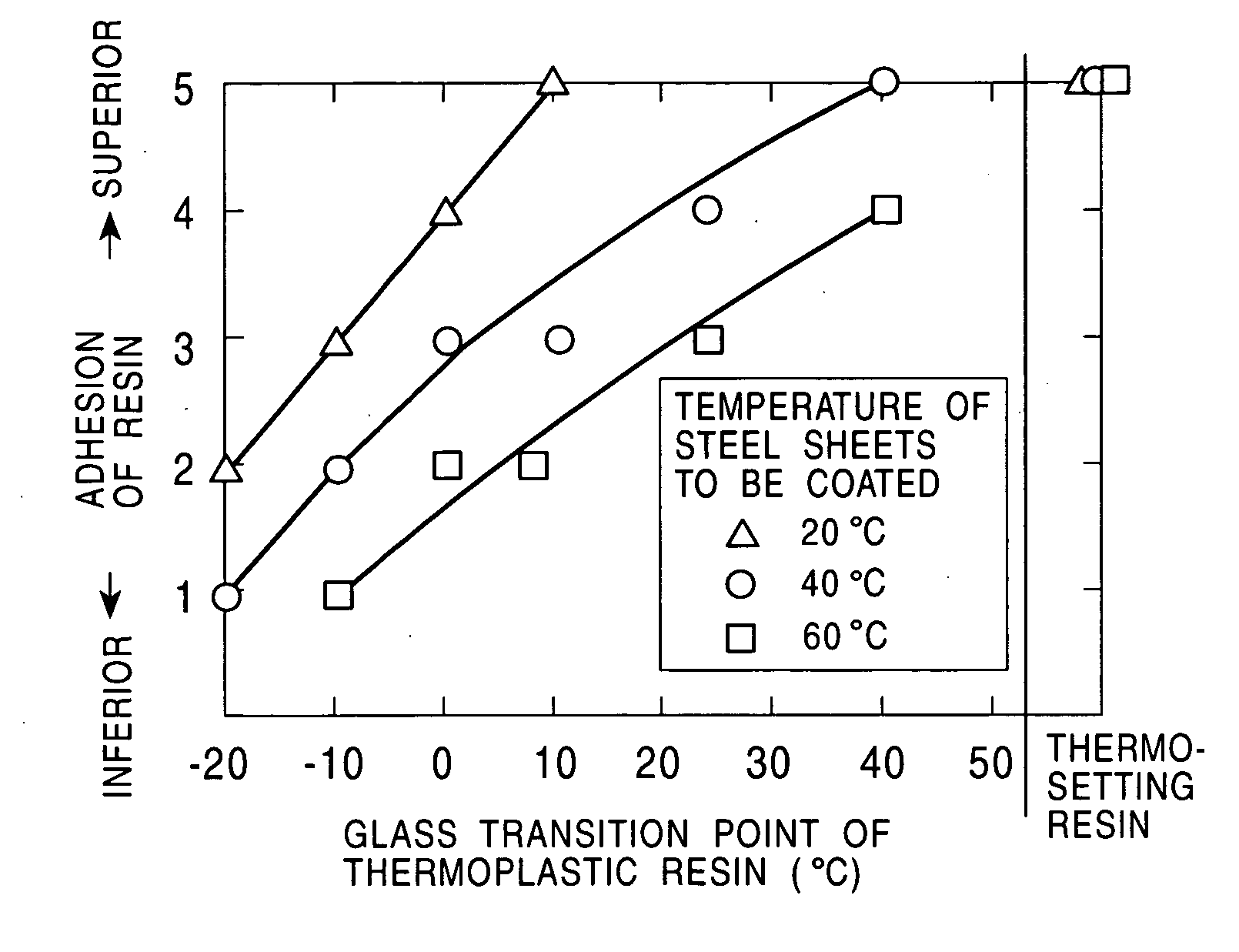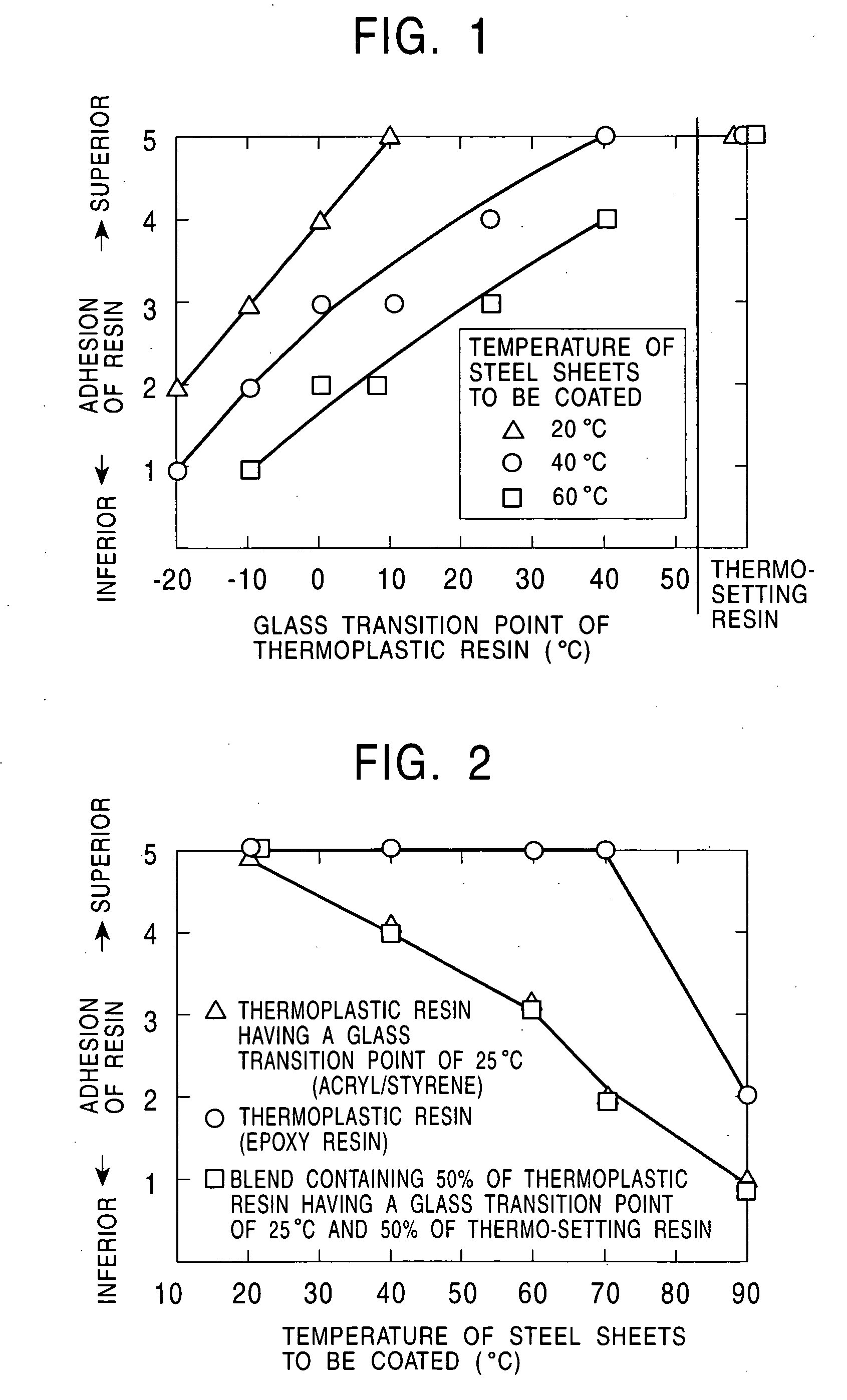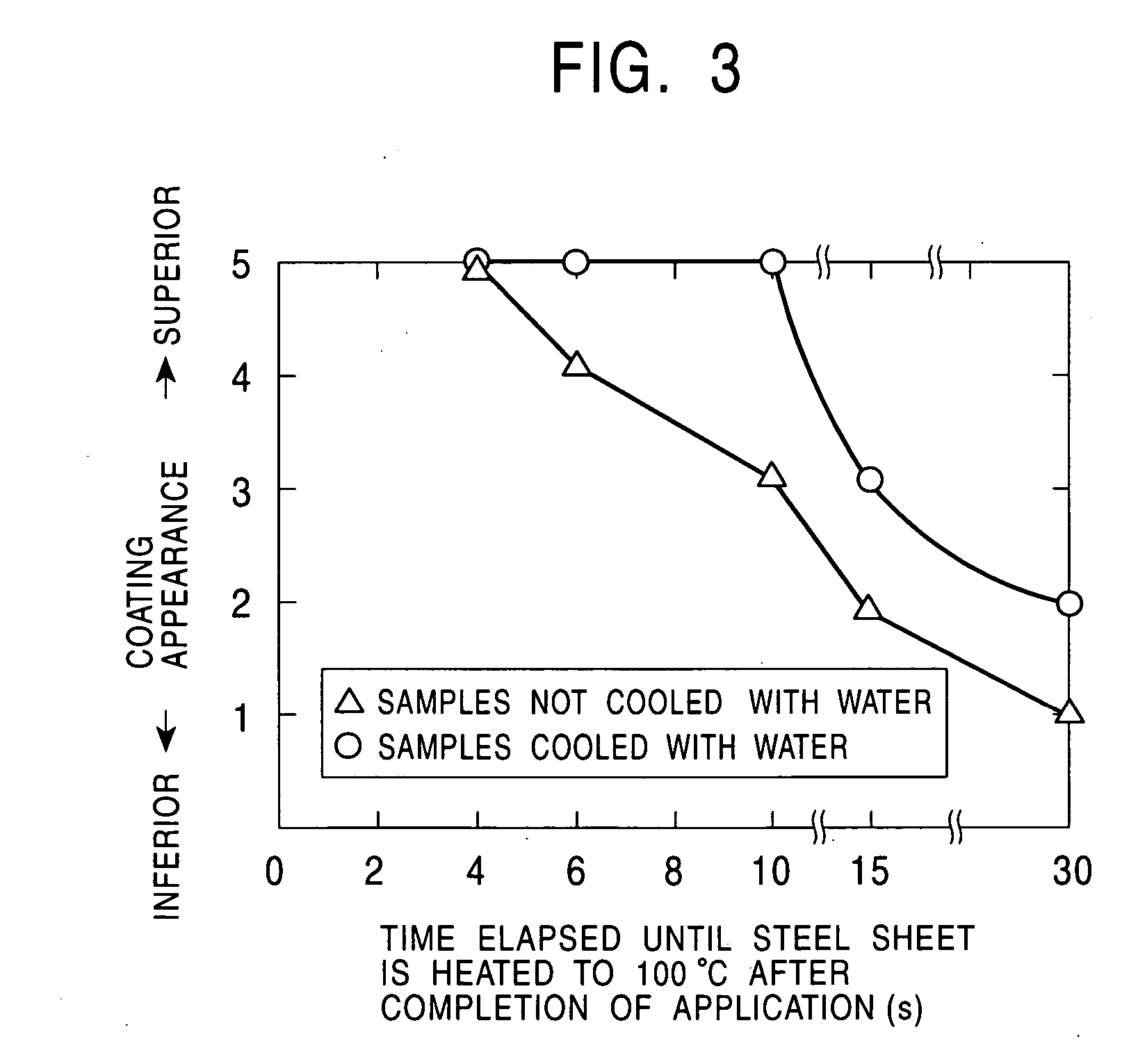Method for producing coated steel sheet
- Summary
- Abstract
- Description
- Claims
- Application Information
AI Technical Summary
Benefits of technology
Problems solved by technology
Method used
Image
Examples
example 1
Steel ingots for manufacturing cold-rolled steel sheets were manufactured and then hot-rolled, and the hot-rolled steel sheets were annealed according to needs. The resulting steel sheets were cold-rolled, thereby obtaining cold-rolled steel strips having a thickness of 0.5 mm, a width of 1 m, and a surface roughness Ra of 0.3 μm. The cold-rolled steel strips were then annealed at 900° C. in an atmosphere in which the ratio of H2 to N2 is 30:70. Water-based coating liquids having composition shown in Tables 6-1 and 6-2 were each applied onto corresponding steel sheets. Conditions of the application and drying and baking conditions are shown in Table 7 together with evaluation results of obtained products. The coating thickness (the area weight per face on a dry basis) was 0.1-6 g / m2. The area weight was adjusted by varying concentration of the coating liquid (0.5 to 30 mass %).
The steel sheets had the following composition: 0.012 mass % of C, 0.009 mass % of Si, 0.14 mass % of Mn...
example 2
According to a known procedure, steel slabs having predetermined composition were subjected to hot-rolling, and the hot-rolled steel sheets were subjected to annealing, cold-rolling, intermediate annealing, cold-rolling, and then finish annealing in that order, thereby obtaining nonoriented electromagnetic steel sheets (steel sheets to be treated) having a thickness of 0.5 mm and a surface roughness Ra of 0.4 μm. The steel sheets had the following component: 0.35 mass % of Si, 0.001 mass % of Al, and 0.1 mass % of Mn, the remainders being Fe and unavoidable impurities. The ultimate temperatures achieved in the annealing operation of the hot-rolled steel sheets, the intermediate annealing operation, and the finish annealing operation were 1000° C., 900° C., and 1000° C., respectively.
The electromagnetic steel sheets were cooled to 30° C. Each water-based coating liquid containing solutes and dispersoids (the ratio of water to the total solute and dispersoid amount is 95:5 on a mas...
example 3
Nonoriented electromagnetic steel sheets (steel sheets to be treated) having a thickness of 0.35 mm and a surface roughness Ra of 0.3 μm were obtained according to the same procedure as that of Example 1. The steel sheets had the following composition: 3.0 mass % of Si, 0.001 mass % of Al, and 0.1 mass % of Mn, the remainders being Fe and unavoidable impurities.
The electromagnetic steel sheets were cooled to 40° C. Each water-based coating liquid containing solutes and dispersoids (the ratio of water to the total solute and dispersoid amount is 95:5 on a mass basis) was then applied onto surfaces (both faces) of each electromagnetic steel sheet using a roll coater. A combination of the solutes and dispersoids had the following composition: 60 mass % of colloidal silica and 40 mass % of an epoxy resin dispersion (a particle size of 500 nm). The resulting steel sheets were heated by an induction heating method or a heating method using an air(gas)-heating furnace such that the stee...
PUM
| Property | Measurement | Unit |
|---|---|---|
| Temperature | aaaaa | aaaaa |
| Temperature | aaaaa | aaaaa |
| Temperature | aaaaa | aaaaa |
Abstract
Description
Claims
Application Information
 Login to View More
Login to View More - R&D
- Intellectual Property
- Life Sciences
- Materials
- Tech Scout
- Unparalleled Data Quality
- Higher Quality Content
- 60% Fewer Hallucinations
Browse by: Latest US Patents, China's latest patents, Technical Efficacy Thesaurus, Application Domain, Technology Topic, Popular Technical Reports.
© 2025 PatSnap. All rights reserved.Legal|Privacy policy|Modern Slavery Act Transparency Statement|Sitemap|About US| Contact US: help@patsnap.com



